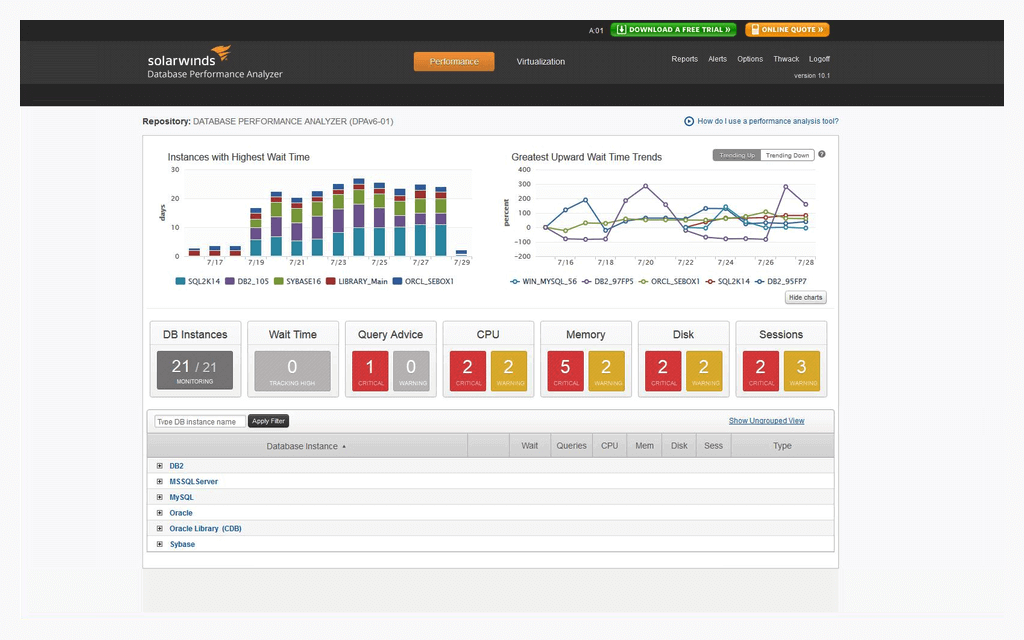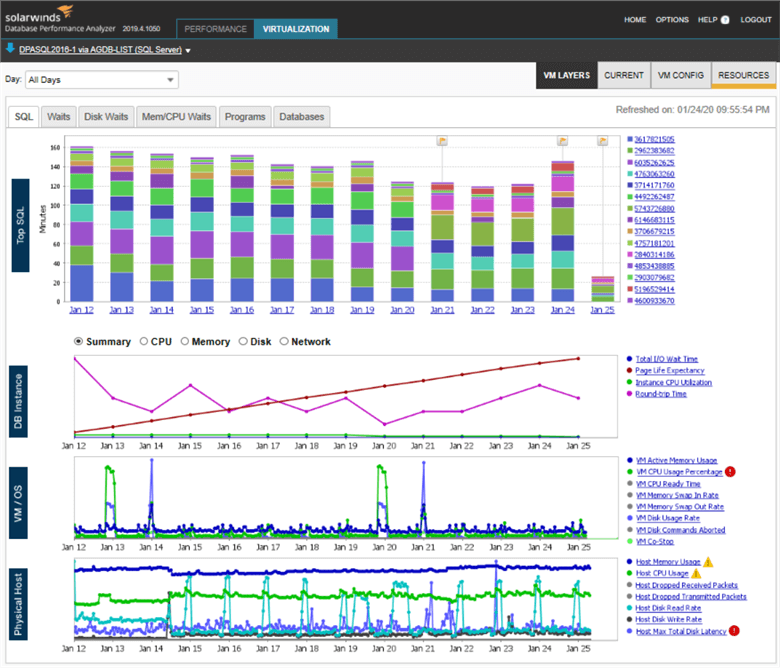
“For some time, there were three fully compromised packages still publicly available for download from SolarWinds’ website, but have since been removed after we reported the findings,” according to a Huntress spokesperson.įor its part, SolarWinds has declined to issue any statement other than what it said in a media statement on Sunday: “We strive to implement and maintain appropriate administrative, physical, and technical safeguards, security processes, procedures, and standards designed to protect our customers.” SolarWinds: A Perfect Target
#Solarwinds dpa update
And Huntress researcher Kyle Hanslovan said that he had seen the malicious DLL still available via various update mechanisms.
#Solarwinds dpa software
In all, SolarWinds said that it pushed out tainted software updates to almost 18,000 government agencies, contractors and enterprises over the course of the incident (between March and June), as Threatpost previously reported.Īlso, even though the last push of the trojanized updates happened in June, the malicious updates remained available for download until this week.
#Solarwinds dpa Patch
From there, it was bundled into a patch and distributed across thousands of customers.” This made the DLL look like a legitimate and safe component for their Orion product.

“We know this because the component that contained the malware was ‘code signed’ with the appropriate SolarWinds certificate. “It’s possible that the bad actors were able to gain access to either the SolarWinds source-code repository or their build pipeline and insert the malicious code,” said Ray Kelly, principal security engineer at WhiteHat Security, told Threatpost. Departments of Treasury and Commerce, DHS, FireEye and others around the world. This installed the Sunburst/Solorigate backdoor inside the platform, which the attackers were subsequently able to take advantage of in targeted attacks on the U.S.
#Solarwinds dpa code
On Monday, SolarWinds confirmed that adversaries ( likely nation-state-backed) were able to inject malicious code into normal software updates for the Orion network-management platform. “Depending on the IP address returned when the malware resolves avsvmcloudcom, under certain conditions, the malware would terminate itself and prevent further execution.” Compromising a Legitimate Patch “We identified a killswitch that would prevent Sunburst from continuing to operate,” a FireEye spokesperson told Threatpost. The kill switch, developed by FireEye in collaboration with Microsoft and GoDaddy, will defang new and previous Sunburst infections by disabling any deployments that are still beaconing to the C2.

It beacons out to a command-and-control (C2) domain called avsvmcloudcom. The backdoor was injected into .dll, a SolarWinds digitally signed component of the Orion software framework, which is a plugin that communicates via HTTP to third-party servers.

Microsoft calls the backdoor “Solorigate.” “Starting on Wednesday, December 16 at 8:00 AM PST, Microsoft Defender Antivirus will begin blocking the known malicious SolarWinds binaries,” a Microsoft security blog explained. Microsoft for instance on Wednesday began blocking the versions of SolarWinds updates containing the malicious binary, known as the “Sunburst” backdoor, and, FireEye has identified a kill switch for the malware.

That story is unfolding as defenders take action. “CISA has evidence of additional initial access vectors, other than the SolarWinds Orion platform however, these are still being investigated,” it said in an updated bulletin on Thursday. Cybersecurity and Infrastructure Security Agency (CISA) has warned that SolarWinds may not be alone in its use in the campaign. Researchers said that includes its use of a default password (“SolarWinds123”) that gave attackers an open door into its software-updating mechanism and, SolarWinds’ deep visibility into customer networks. A perfect storm may have come together to make SolarWinds such a successful attack vector for the global supply-chain cyberattack discovered this week.


 0 kommentar(er)
0 kommentar(er)
